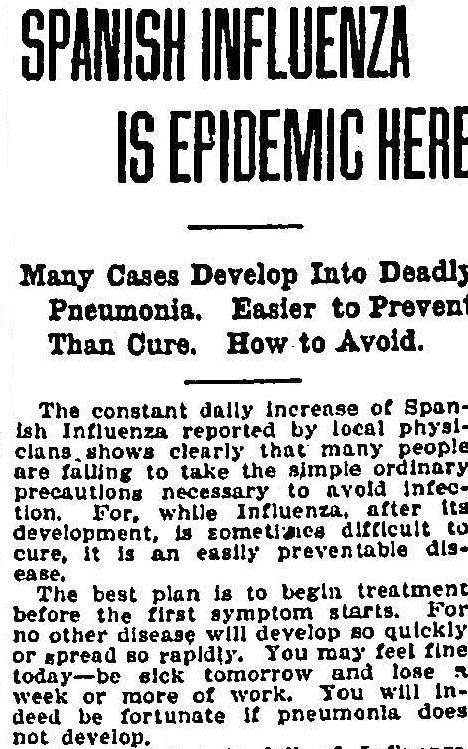
This can happen through infections in animals such as birds or pigs mutating into a form that makes them infectious to humans. While seasonal flu constantly circulates and mutates, most people build up a level of immunity to it.Ī pandemic happens when a new flu virus - one we have no or low pre-existing immunity to - enters the human population. There's a difference between seasonal flu and a pandemic, Dr Short said. ( Wikimedia Commons: Lorenzo Aguirre in El Figaro) Flu happens every year. We're running out of cemeteries", perhaps alluding to conflicting media reports of the pandemic.

The caption reads roughly: "Latest: The flu is still appearing as harmless. The Naples Soldier (metaphor for the Spanish Flu in Spain). Some theories place the virus originating in France or England, others in China, but Dr Short said the best supported theory was that it broke out in Kansas in the US and was spread around the world by US soldiers. "In contrast, countries that were at war, such as Germany and Britain, they didn't really want to be talking about an influenza pandemic that was affecting their troops, because not only would it lower morale but it could also sort of make them seem more vulnerable to the enemy," Dr Short said.Īs to the virus's true origins, it's a murky story. Spain was a neutral party in World War I, and didn't have the same wartime censorships in place other countries did.

But it's where a lot of the press coverage of the pandemic came from. The 1918 pandemic didn't start in Spain, nor was it most deadly there.

( Wikimedia Commons: Edward A "Doc" Rogers at Oakland Public Library) Why 'Spanish' flu? Volunteer nurses tending influenza sufferers in Oakland, California, during the pandemic of 1918.


 0 kommentar(er)
0 kommentar(er)
